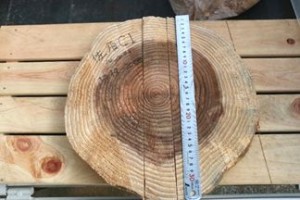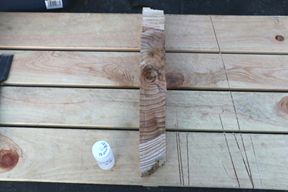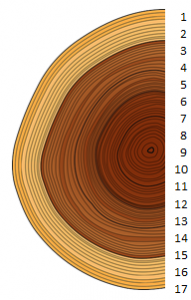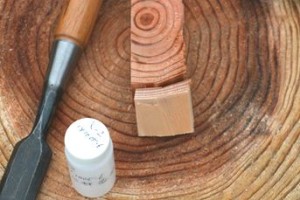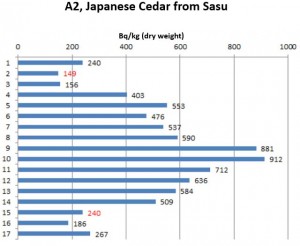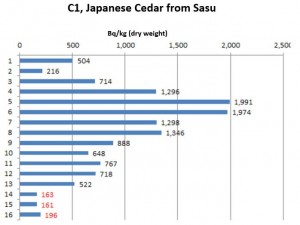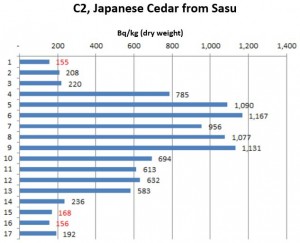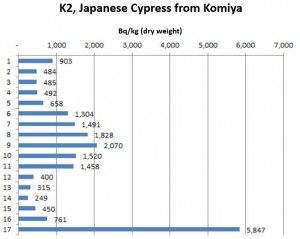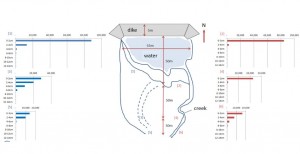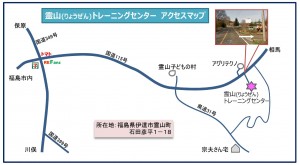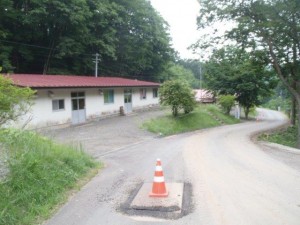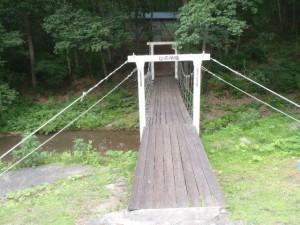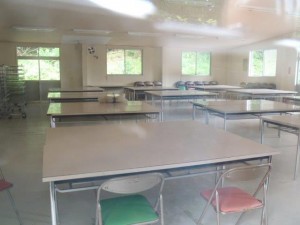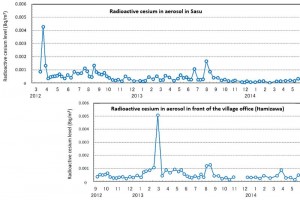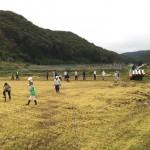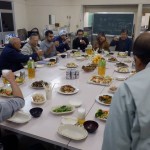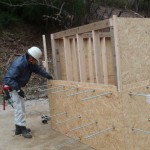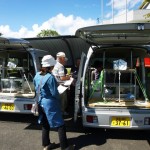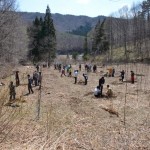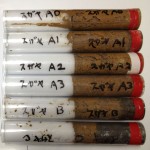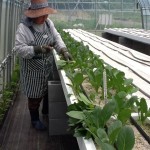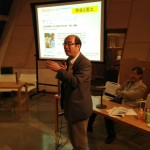Interviews by foreign media
On February 25, 2015, the press tour group, affiliated with Foreign Press Center Japan, visited Iitate village. It was almost four years after the March 11 tragedy.
On that day, Dir. Muneo Kanno and Pres. Yoichi Tao guided the foreign correspondents in the village and were interviewed. As of mid-April, 2015, it has been reported in these various countries:
Il Sole 24 Ore, Italy
March 12, 2015(video)
Title (tentative translation): Fukushima Four years Later: Children and Factories between Problems and Hopes
Original title: IL REPORTAGE/2. Fukushima 4 anni dopo: bambini e fabbriche tra problemi e speranze () http://video.ilsole24ore.com/SoleOnLine5/Video/Notizie/Asia%20e%20Oceania/PIANETA-GIAPPONE/2015/03/fukushima-reportage-secondo/fukushimareportage2.php
USA Today, USA
March 11, 2015 (article)
Title: 250,000 Japanese still displaced 4 years after quake
http://www.usatoday.com/story/news/world/2015/03/09/japan-tsunami-radiation-fourth-anniversary-fukushima/24254887/
MediaCorp/Channel NewsAsia, Singapore
Aired on March 11, 2015
Title: Japan marks 4th anniversary of quake-tsunami disaster
http://www.channelnewsasia.com/news/video/japan-marks-4th/1709164.html
Aired on March 11, 2015
Title: Residents of Iitate Village rebuild their lives after Fukushima disaster
http://www.channelnewsasia.com/news/video/residents-of-iitate/1703658.html
Swiss Radio and TV, Switzerland
Aired on March 11, 2015
Title (tentatively translation): Fukushima; four years thereafter
Original title: Fukushima: vier Jahre danach
http://www.srf.ch/play/tv/tagesschau/video/fukushima-vier-jahre-danach?id=0b294171-05b4-4c43-8db9-e4701d07c15d
Le Monde. Fr, France
March 10, 2015 (article)
Title (tentative translation): The wretched earth
Original Title: Les damnés de la terre
http://www.lemonde.fr/idees/article/2015/03/10/les-damnes-de-la-terre_4590340_3232.html#AXtL5bzZw8FpuVbb.99
新華社 Xinhua News Agency, China
March 10, 2015 (article)
Title (tentative translation): Four years after the disaster, Fukushima decontamination effect doubtful
Original title: 灾后4年,日本福岛除污效果存疑
http://www.apdnews.com/asia/neasia/2015/0310/172360.shtml
EPA, European Pressphoto Agency, Germany
March 10, 2015 (photos)
Rebuilding Fukushima Japan – Four years after the nuclear accident
Agencia EFE, S.A., Spain
March 6, 2015 (video)
Title (tentative translation): Iitate, a ghost town by radiation from Fukushima
Original title: Iitate, un pueblo fantasma por la radiación de Fukushima
http://prodigy.msn.com/es-mx/video/noticias/iitate-un-pueblo-fantasma-por-la-radiaci%C3%B3n-de-fukushima/vi-AA9sLrQ
March 6, 2015 (article)
Title (tentative translation): Iitate, a paradise turned into ghost town by radiation, Fukushima
Original title: Iitate, un paraíso convertido en pueblo fantasma por la radiación de http://www.efeverde.com/noticias/iitate-pueblo-fantasma-radiacion-fukushima/
경향신문 Kyunghyang Shinmun, Korea
March 4, 2015(article)
Title (tentative translation):four years since the great east Japan earthquake; piles of black bags from decontamination remain in the village left by villagers
Original title: [동일본 대지진 4년] 4년째 방사능 오염토 제거… 주민 떠난 곳 ‘검은 포대’ 산더미
http://news.khan.co.kr/kh_news/khan_art_view.html?artid=201503032157145
동아일보 THE DONG-A Ilbo, Korea
March 4, 2015 (article)
Title (tentative translation): A million of plastic bags occupy farmland after the villagers left
중앙일보JoongAng Ilbo, Korea
March 3, 2015 (video)
Title (tentative translation): Fukushima, tragic place but wing-stroking for revitalization
Original title: [후쿠시마 4주년] “일터 지킨다”…’비운의 땅’ 재기의 날갯짓
[후쿠시마 4주년] ‘방사능 공포’ 여전…고향집 버리는 사람
[후쿠시마 4주년] 갑상선암 환자 늘었는데…일본 정부, 은폐?
[후쿠시마 4주년] “일터 지킨다”…’비운의 땅’ 재기의 날갯짓
March 4, 2015 (morning paper article)
Filled with packed radiation contaminated soils, resident peple say “we cannot return” (1)
Filled with packed radiation contaminated soils, resident peple say “we cannot return” (2)
聯合報 United Daily News, Taiwan
March 1, 2015 (article and video)
Title (tentative translation): Fukushima nuclear disaster after four years; village and forests occupied by piles of black bags are still off-limits
Original title: 福島核災4年…黑袋山占據村落 森林仍是禁地
http://udn.com/news/story/7837/731000
March 1, 2015 (article and video)
Title (tentative translation): living in temporary housing; we don’t want to leave Fukushima
https://video.udn.com/news/282584
Radiocesium concentrations inside the trunks of Japanese cedar and Japanese cypress
Reported by Osamu Uchida, Ichio Ii
Radiocesium was found to concentrate towards the center of the trunks of Japanese cedar and Japanese cypress, to a maximum of 2,000 Bq/kg according to the measurement of several samples taken from a small forest called Igune surrounding farm houses in Iitate.
Radioactive plumes flew down to many places in a wide scope including Iitate village right after the nuclear power plant accident and spread to the Japanese cedar and Japanese cypress trees. These trees were planted to form what is called an Igune which surrounds residential houses.
This resulted in contamination of the bark and leaves of these trees which became a source of radiation, thereby providing impact of ambient dosage around the residential houses.
This phenomenon has already been known but it was not made aware that it has been working its way through the tree trunks since little measurement was done to check the extent of the radioactive matter which has seeped through the tree trunks. Because it was not that easy to cut the trees of the Igune surrounding the residential areas just for measurement purposes.
The situation has changed recently when some of the trees were cut as part of the decontamination work being done. We were then able to obtain some trunk samples from the felled trees and measured the radiocesium level inside the trunks.
First, we carved a disc from a trunk. Then we cut a block going through the diameter at the center of the disc. Further, we cut the block equally to 16-17 pieces and packed each piece into individual vials for radioactivity measurement.
The cross section drawing on the left illustrates the location numbers of sample pieces that were used in the following charts.
Sample A2 was taken from a felled Japanese cedar tree at 150 cm above the tree stump, which had stood in an Igune behind a residential house in Sasu district.
The numbers on the vertical axis indicate the approximate/relative positions in the trunk as shown in the previous chart. Each bar length and number shows radioactivity at the location in Bq/kg (dry weight). A red color indicates that radioactivity at the location was less than the detection limit and the red number itself indicates the value of the detection limit.
C1 was taken from another felled Japanese cedar tree in the same Igune as that of A2. The sample was cut out at 20 cm above the tree stump
C2 was taken from the same tree as C1, and the sample was cut out at 150 cm above from C1.
K2 was taken from a Japanese cypress in Komiya district. No. 17 in the chart is the bark.
All the samples except the outmost part indicate that radiocesium seems to concentrate toward the center inside the trunk, to a maximum 2,000 Bq/kg. We will study further by sharing with forest experts whether this tendency depends on the tree species and the way radiocesium transfers toward the center.
Radiocesium in reservoirs
By Ichio Ii
Reservoir decontamination
There are concerns that a high level of radiocesium (Cs134, Cs137) might accumulate at the bottom of water reservoirs, if so, the crops cultivated using the reservoir water could be contaminated with a high level of radiocesium. To respond to these concerns, the national government has decided to support the local government with subsidies and technologies to conduct decontamination work
Survey of reservoirs
The residents who are residing now and the evacuees who are thinking to return home in the future are desperately concerned with the water for drinking and agriculture. On the other hand, some study result says, most of radiocesium detected in the reservoir water is in the state of “suspension”, that means, the cesium has strongly bound to clay particles that are suspended in the water. Therefore the transfer of radiocesium to crops is very limited. Another opinion says, the effectiveness of the decontamination of reservoirs would be somewhat limited because contaminants would enter the reservoir again after decontamination.
Measurement of the reservoir mud in Tamano district
As the first step to understand the situation at the bottom of reservoirs, “Resurrection of Fukushima” measured a distribution of radiocesium level of the soil at a dried reservoir bottom.
Obara-san, a member volunteer of the NPO, took the samples of the reservoir bottom at six locations in Tamano on February 12, 2014. Then “Circle Madei”, a volunteer group from the Faculty of Agriculture of Tokyo University carved each sample in 2 cm thickness, which was individually packed in a vial on May 12, 2014. And had the radioactivity measured using the NaI scintillation counter at RI Center of the Faculty on May 28, in cooperation with Assistant Professor A. Hirose.
The following chart illustrates the distribution of radioactivity (dry weight base) in 0-14 cm deep at each point.
The locations [1] and [2] were the state in which the soil still kept some moisture just after water has dried up, so these samples seemed to maintain the condition as that in the reservoir bottom under water.
The other four points are the locations wherein it took some time after the reservoir bottom was dried out.
Observations by Ichio Ii
- Recently dried reservoir bottoms ([1] and [2]) contain higher level of radiocesium than the early dried bottoms ([5] and [6]). The recently dried bottom concentrates radiocesium in a much shallower depth (0-2 cm from the surface), than the early dried bottom.
By extrapolating from this result, it is estimated that at the part where water still remains at the reservoir bottom, radiocesium concentrates in a much thinner surface and the level is over 100,000 Bq/kg of dry soil. - If decontamination work of reservoir bottom is considered, draining water and scraping of the bottom surface by 2cm deep can reduce cesium level by more than 90%. But it is also likely that the drained water is entrained with contaminated sediments. And contamination may happen again if contaminated fallen leaves and soil on the mountains flow into the reservoir. We need to consider decontamination from a holistic perspective, including decontamination of forests.
New activity base is opened near Iitate village
We are going to open a new facility, located north over the hill from Sasu. From Muneo-san’s house, it takes 10 minutes by car.
Ryozen Training Center
There is a summer camp facility named Ryozen Center in Ryozen-Machi, Date city. This facility was set up for the children suffering with type 1 diabetes by an NPO who has been dedicated to cure childhood chronic disease.
Agreement concluded
Ryozen Center had been utilized by the NPO for 30 years as the summer camp for the children. However, after the nuclear power plant accident, it became difficult to use for the original purpose. Then, we agreed with the NPO to use the facility as the activity base for Resurrection of Fukushima. This is a great privilege for us and also the result that the NPO has strongly sympathized with our objective, revitalization of Fukushima.
To be mobilized from August, 2014
Ryozen Center is a large scale facility that can accommodate 100 children and may be excessive just for lodging our people. It has been in good maintenance and housekeeping, and most importantly, Ryozen Center is located near Iitate village, which will be strongly functionalized as our activity base. We will start preparatory work after the summer vacation and open the facility in the late August, 2014.
Rubble removal at nuclear power plant spread cesium to Iitate’s aerosol?
Reported by Yukiko Dokiya
On July 15 and 16, 2014, Asahi Shimbun reported the news including the following new findings:
- In autumn of 2013, it was a very discouraging news for the farmers in Fukushima that Cesium levels in the rice crops harvested in Minami Soma exceeded the safety standard of 100 Bq/kg. Then almost one year passed, Asahi Shimbun revealed that the rice contamination in Minami Soma was very likely caused by the rubble removal work at Fukushima Daiichi nuclear power plant conducted in July, 2013.
- The Ministry of Agriculture, Forestry and Fisheries noticed this problem in March of 2014 and called on TEPCO to take preventive measures in its debris-removal work. TEPCO has not told the public about the ministry’s findings. Ministry officials said they planned to disclose the findings after confirming the cause of the rice crop contamination. The mayor of Minami Soma said. “We protest (TEPCO’s) irresponsible clearing of rubble that raises concern among farmers and citizens, and “We demand an explanation.”
- Professor A. Koizumi of Graduate School of Medicine, Kyoto University and four other scientists measured the Cesium concentration in atmospheric dusts and reported that 20-30 times higher level of cesium was detected at Minami Soma city and 6 times at Soma city. With the wind’s speed and direction at that time, as well as size of the collected particles, they concluded that the radioactive cesium of the rice in Minami Soma resulted from the rubble removal work at Fukushima Daiichi plant on Aug. 19, 2013. In March of 2014, the scientists presented their findings to the Ministry of the Environment.
- Tokyo Electric Power Co. (TEPCO) plans to clear the debris from the Fukushima Daiichi nuclear plant despite strong indications that earlier removal work contaminated rice paddies far from the area of the damaged plant.
Resurrection of Fukushima has been continuously monitoring radioactivity in atmospheric dust (aerosol) in Sasu and in front of the village office (Itamizazawa) in Iitate village since 2012, as a collaborative work with the National Institute for Environmental Studies. The monitoring data at both points showed that radioactive cesium level of aerosol in the week of August 19 was 3- 4 times higher than the other weeks in 2013 (see attached graphs). Since similar level of increase was identified at both monitoring points, we recognized at that time that something but not localized (e.g. within Iitate village) might happen (c.f. the graph of the village office has the highest peak in April of 2013 due to the surface removal of the concrete pavement near the office building during the decontamination work, while the graph of Sasu shows no peak at that time.)
By the article of the Asahi Shimbun, we realized that the increase of radioactive cesium level in the aerosol of Iitate in August of 2013 was coincident with the rubble removal work in the nuclear power plant. In the article, a contamination map is attached, which shows the locations of air sampling with the results, and the locations of cultivated rice detected radioactive cesium higher than the standard level in Minami Soma. Reading the article (see the link: http://www.asahi.com/articles/photo/AS20140715005861.html), we recognized that Iitate being located near the western edge of the wide radioactive plume calculated by SPEEDI (System for Prediction of Environmental Emergency Dose Information), thus, has received some radioactive Cesium in aerosol samples. TEPCO appeared to have apologized to the Mayor of Minami Soma, however, another rubble removal is also reported to be scheduled. We hope that detailed information of soil contamination and hot spots will also be disclosed geographically in the same manner.
Currently, decontamination work is ongoing for residential houses and farm lands, and the farmers are making desperate efforts to restart cultivation. Under these circumstances, additional contamination is completely unacceptable. Furthermore, it is difficult to identify the contaminant source, unless polluters spontaneously disclose the information. We strongly request TEPCO and the government to immediately disclose all the precise data on the rubble removal.
(Please click the graph below to view it at a larger size)
A New Year Greetings: Activities done in 2014 and plans for 2015
Season’s Greetings!
We are about to enter the fourth year since the great earthquake and the subsequent nuclear power plant accident. As we start the New Year, I would like to share our activities we have done in 2014 and the planned activities for 2015. We commit to continue our maximum efforts for the resurrection of the disaster-stricken areas in the spirit of empathy and collaboration. We are looking forward to your strong cooperation from all aspects. Thank you very much!
January 1st, 2015
Yoichi Tao, President
“Resurrection of Fukushima”, NPO, Japan
Major activities done in 2014
- New rice from the third cycle of wet-rice trial cultivation was harvested and brought in JA Sohma (an agricultural cooperative), where all the rice in every package was individually examined. As a result, no radioactivity was detected lower than the detection limits. A tasting event was held with some members of the “Resurrection of Fukushima”, wherein they enjoyed its very rich taste.
- Ryozen Center started as the base of activities and it is available throughout all seasons. This facility center was inaugurated by the compassion and cooperation of a NPO who have been dedicating themselves to cure childhood chronic disease.
- A concept of the residential house model was made to revive life and industries in Iitate village. An experimental hut was designed, constructed and has been used for the experiments.
- Three years have already passed since the radiation measurement activities were started by the villagers. For the purpose of increasing the measurement accuracy and providing more precise information, two specialized cars are being utilized solely for measurement purposes, in cooperation with KEK (High Energy Accelerator Research Organization) and Suzuki Motor Corporation. The radiation measurement activities by the volunteer members continues, not only within the village but including the areas outside its premises.
- A Sakura planting ceremony was held at Komiya district for the purpose of extending empathy to each villager who still keeps the inherited land and house close to her/his heart. The participants included many students and volunteers.
- In order to perceive a real picture of the decontamination effectiveness led by the national government, measurement of radiation and soil radioactivity were conducted at a pre and post-decontamination activity.
- Drip irrigation was started at the green houses that were constructed in cooperation with the City and Farm Village Interchange Center, an NPO.
- “Circle Madei” is having ongoing activities and has conducted various radioactivity measurement in collaboration with the staff of the Faculty of Agriculture of Tokyo University and other people.
- The members who are involved in welfare and medical services visited Iitate Home (a nursing home) and some temporary houses for a trial support service to the people of the disaster-stricken area.
- Debriefing sessions of the NPO were held at the branch office of the Iitate Village Office in March, while the others were conducted in the Faculty of Agriculture of Tokyo University in May and October.
- “Resurrection of Fukushima” became the approved/specified NPO, approved by the Tokyo metropolitan government in June.
Activity plans for 2015
- We plan to capture a wild boar for the third round. The villagers, experts and volunteers are ready to act immediately whenever a wild boar is trapped. We have been waiting for a long time in this winter, because wild boars do not come close surrounding the residential areas and there are 7,500 workers are working in the village for decontamination.
- We further enhance the ongoing activities such as wet-rice trial cultivation, radiation measurement throughout the whole village, drip irrigation and radioactivity measurement by “Circle Madei” and others.
- We enhance the activities with Ryozen Center as a strategic hub so that our activities can be performed beyond the boundaries among Iitate Village, Date City, Soma City, etc. We also operate Ryozen Center as the meeting hub for people to interchange with the residents, NPO members, visitors, etc. Furthermore, by taking advantage of the lodging facilities already in place, we provide Ryozen Center as the accommodation hub to leverage the study tours so that many students and workers in Japan and from other countries can see and learn the real picture of Fukushima.
- While decontamination works are ongoing in line with the national government policy, we check the decontamination effectiveness and the impacts to the local agriculture and environment in terms of what influences are induced by scraping the soil surfaces. And we look for necessary means to revive the area in cooperation with the residents, volunteers, experts, etc.
- Looking ahead, when the government lifts their evacuation directive from a certain part of Iitate village, we prepare to construct a residential house model in Sasu district, which will be made from the local natural resources such as the forest resources, stones/rocks, soils, etc. We foresee a smart utilization of Iitate’s natural resources.
- We aim to establish the state that measurements in the village are conducted by themselves. For this purpose, we enhance the measuring instruments and grow up the local staff people to obtain the necessary skills.
- We aim to localize all the measurement work by the villagers themselves. For this purpose, we enhance the measuring instruments and skill development for the local people.
- In order to revive human life and industries in the nuclear disaster-stricken areas, we seek as many people as possible to know the activities of “Resurrection of Fukushima” and expand the ring of empathy and collaboration around the globe.
We plan to capture a wild boar for the third round. The villagers, experts and volunteers are ready to act immediately whenever a wild boar is trapped. We have been waiting for a long time in this winter, because wild boars do not come close surrounding the residential areas and there are 7,500 workers are working in the village for decontamination. - We further enhance the ongoing activities such as wet-rice trial cultivation, radiation measurement throughout the whole village, drip irrigation and radioactivity measurement by “Circle Madei” and others.
- We enhance the activities with Ryozen Center as a strategic hub so that our activities can be performed beyond the boundaries among Iitate Village, Date City, Soma City, etc. We also operate Ryozen Center as the meeting hub for people to interchange with the residents, NPO members, visitors, etc. Furthermore, by taking advantage of the lodging facilities already in place, we provide Ryozen Center as the accommodation hub to leverage the study tours so that many students and workers in Japan and from other countries can see and learn the real picture of Fukushima.
- While decontamination works are ongoing in line with the national government policy, we check the decontamination effectiveness and the impacts to the local agriculture and environment in terms of what influences are induced by scraping the soil surfaces. And we look for necessary means to revive the area in cooperation with the residents, volunteers, experts, etc.
- Looking ahead, when the government lifts their evacuation directive from a certain part of Iitate village, we prepare to construct a residential house model in Sasu district, which will be made from the local natural resources such as the forest resources, stones/rocks, soils, etc. We foresee a smart utilization of Iitate’s natural resources.
- We aim to localize all the measurement work by the villagers themselves. For this purpose, we enhance the measuring instruments and skill development for the local people.
- In order to revive human life and industries in the nuclear disaster-stricken areas, we seek as many people as possible to know the activities of “Resurrection of Fukushima” and expand the ring of empathy and collaboration around the globe.
